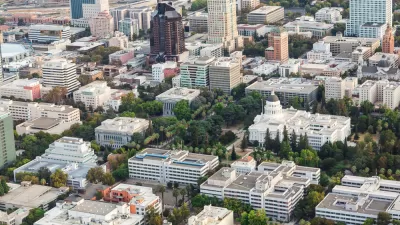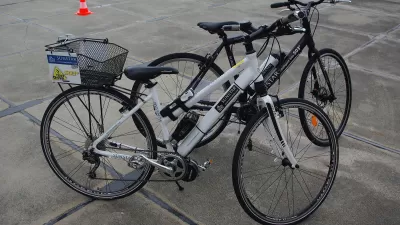Every component of a building, from the concrete foundation to the paint on the walls, has an impact on human health, the climate, and ecosystems around the globe. Building materials—once overlooked in real estate’s sustainability efforts—are now bei

Every component of a building, from the concrete foundation to the paint on the walls, has an impact on human health, the climate, and ecosystems around the globe. Building materials—once overlooked in real estate’s sustainability efforts—are now being recognized as key to achieving net zero carbon emission targets and delivering healthy places for tenants and communities.
For First United Bank, a regional bank headquartered in Durant, Oklahoma, choosing the right construction materials for its new branch locations became an important way for the company to outwardly express its people- and planet-focused values.
“First United wanted the buildings to integrate and showcase sustainable strategies while inspiring and relating to their customer base,” according to project architect, Taylor Coleman, a senior associate at Gensler. “Using mass timber proved to be an excellent way to achieve these goals.”
The inviting, light-filled lobby of First United Bank’s branch in Fredericksburg, Texas, is characterized by wood—lots of it. Completed in 2019, the 8,500-square-foot (790 sq m) building was the first fully mass timber structure in the state and the first project in the country to use cross-laminated timber (CLT) panels made from southern yellow pine, a locally grown and sourced wood.
Compared with traditional materials like concrete and steel, mass timber has a much lower environmental impact and has been shown to improve occupant health and well-being by evoking nature—a concept known as biophilia.
After completing the Fredericksburg branch, First United Bank and Gensler partnered on two additional mass timber bank buildings in Shawnee, Oklahoma, and Sherman, Texas. Gensler is now designing more than 2 million square feet (185,800 sq m) of mass timber buildings for Walmart’s new home office campus project in Bentonville, Arkansas, and working on Under Armour’s Baltimore global headquarters, another fully mass timber project.
These projects are representative of a larger industry trend favoring sustainable construction materials.
Over the last decade, this movement has mainly been championed by architecture and design firms, but real change will be possible only with coordinated efforts across the industry, says Diane Hoskins, Gensler’s co-CEO. “The decarbonization of the built environment is a complex challenge requiring the entire real estate sector to move toward low-carbon solutions.”
Spurred by increasingly restrictive regulations, reporting requirements, and growing demands from investors and tenants, the industry’s sustainability efforts are now taking materials into account.
An upcoming ULI report, The Material Movement: Creating Value with Better Building Materials, outlines the driving forces behind this shift and highlights key steps that developers and asset managers can take to mitigate their environmental impact and enhance health through building materials
FULL STORY: The Materials Movement: Advancing Low-Carbon, Healthy Materials for Sustainable Communities (ULI)

Study: Maui’s Plan to Convert Vacation Rentals to Long-Term Housing Could Cause Nearly $1 Billion Economic Loss
The plan would reduce visitor accommodation by 25,% resulting in 1,900 jobs lost.

North Texas Transit Leaders Tout Benefits of TOD for Growing Region
At a summit focused on transit-oriented development, policymakers discussed how North Texas’ expanded light rail system can serve as a tool for economic growth.

Using Old Oil and Gas Wells for Green Energy Storage
Penn State researchers have found that repurposing abandoned oil and gas wells for geothermal-assisted compressed-air energy storage can boost efficiency, reduce environmental risks, and support clean energy and job transitions.

Santa Barbara Could Build Housing on County Land
County supervisors moved forward a proposal to build workforce housing on two county-owned parcels.

San Mateo Formally Opposes Freeway Project
The city council will send a letter to Caltrans urging the agency to reconsider a plan to expand the 101 through the city of San Mateo.

A Bronx Community Fights to Have its Voice Heard
After organizing and giving input for decades, the community around the Kingsbridge Armory might actually see it redeveloped — and they want to continue to have a say in how it goes.
Urban Design for Planners 1: Software Tools
This six-course series explores essential urban design concepts using open source software and equips planners with the tools they need to participate fully in the urban design process.
Planning for Universal Design
Learn the tools for implementing Universal Design in planning regulations.
Ascent Environmental
Borough of Carlisle
Institute for Housing and Urban Development Studies (IHS)
City of Grandview
Harvard GSD Executive Education
Toledo-Lucas County Plan Commissions
Salt Lake City
NYU Wagner Graduate School of Public Service





























